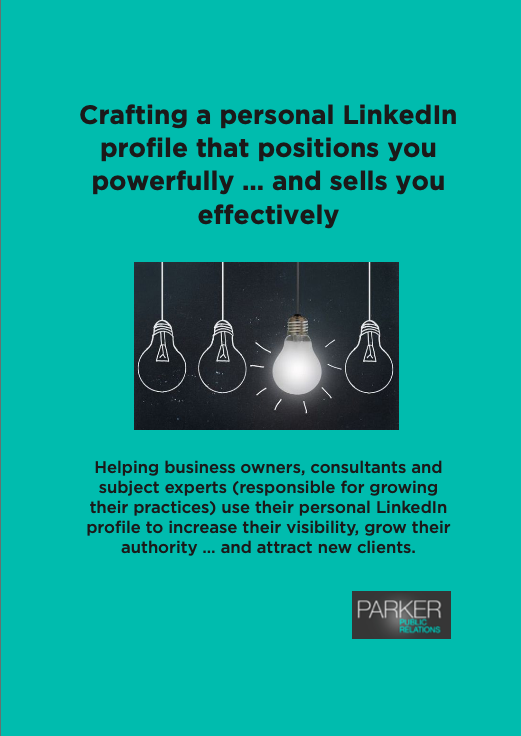This is a question I’m increasingly asked by ambitious executives looking to make it to the C-suite so I figured it was high time I provided a response – thought leadership IS without a doubt the best career insurance about!
And why do I say this? In providing my answer, I thought I’d quote US thought leadership guru, Denise Brosseau, as her thinking well and truly dove-tails with mine:
“Establishing yourself as a thought leader leads to exposure for your ideas both inside and outside your company – particularly with journalists, analysts, event organisers and conference hosts. It will give you access to people who can help you make things happen – leaders in your organisation or community, innovators in your profession or industry and/or researchers in government or regulatory circles.
“As a recognised thought leader you will have the power to persuade, the status and authority to move things in a new direction and the clout to implement real progress and widespread innovation.
“People want to affiliate with those who are well-known and in the know. Thus thought leader status also can lead to invitations to join corporate boards, serve on government commissions and participate in industry-wide committees – all opportunities to raise your profile from the local to the national to the international stage.”
Eight tactics for building your thought leadership
Here are eight fantastic ideas, some of which have come from the Lou Hammond Group which CEOs, members of the C-suite and executives on the move can use to build their thought leadership.
1. Establish your thought leadership niche or topic area
When developing your thought leadership strategy, identify the key areas you have expertise in and focus on those. Where are you an authority and more importantly, how does that skillset translate to your overall business goals?
2. Determine your audience
If you don’t already have one, create customer personas that explore how your customers or audience base proactively seek information in order to make informed decisions. Where do they go when looking for answers to their most burning questions? Remember, with thought leadership, your audience also includes professionals from your industry, journalists, investors, conference organisers, critical connections in government and regulatory circles, leaders in your industry, peak bodies, even competitors.
3. Build a foundation for your thought leadership
Also critical to building the foundation of your thought leadership strategy is to create your expert toolkit. This should include a professional headshot, bio, past published materials, videos, social media profiles and possibly a website.
4. Create a thought leadership content plan
To be perceived as an authority, your content should not only address customer and audience pain points and fill their knowledge gaps, it should also:
o Address emerging issues, trends, threats and disruption facing your industry
o Tie in or piggy-back off key issues and news of the day
o Provide industry predictions
o Include best practise articles and white papers
o Opinion pieces on topics affecting your industry for submission to the media.
5. Seek out speaking engagements
Once you’ve identified where your customers look for industry information and where they network with like-minded individuals, nominate yourself as a panelist or keynote speaker at a conference or industry event and share your expertise and valuable insights on your thought leadership topic area.
6. Publish, publish, publish
Don’t attempt the impossible. Begin small. Blog posts are generally one of the best ways to share your expertise while boosting SEO on your site or social media profiles. Later on include media opportunities, a guide or business book, white papers, videos, podcasts, and info-graphics – the whole shebang.
7. Contribute to the conversation
Never lose sight of the power of social media. Given that news often reaches social media first, it is imperative that leaders or would-be leaders stay informed about their niche area by following key influencers and paying attention to what they’re saying. Proactively, you should contribute to the conversation with your own opinions. You’re a thought leader, so people are interested in what you have to say!
8. Award nominations
Another valuable way to establish authority is by nominating yourself or your company for relevant awards. This can include CEO and executive awards, fastest growing company and best places to work designations, most influential people, etc.
According to the Lou Hammond Group, in every tactic that you deploy, make sure you create a two-way dialogue between yourself and your audience by enabling the conversation to continue. This can be as simple as linking to your website in a byline or as robust as providing workbooks at a speaking engagement. Capitalize on this captive audience by providing them with at least one outlet to learn more about you or your brand.
However, NEVER, NEVER self-promote. It’s a real no-no in the world of thought leadership. Remember you are selling your expertise, not yourself!
If you are interested in thought leadership coaching or a strategy workshop we’d love to talk with you. To get in touch, contact Wendy at wendy@parkerpublicrelations.com.au


